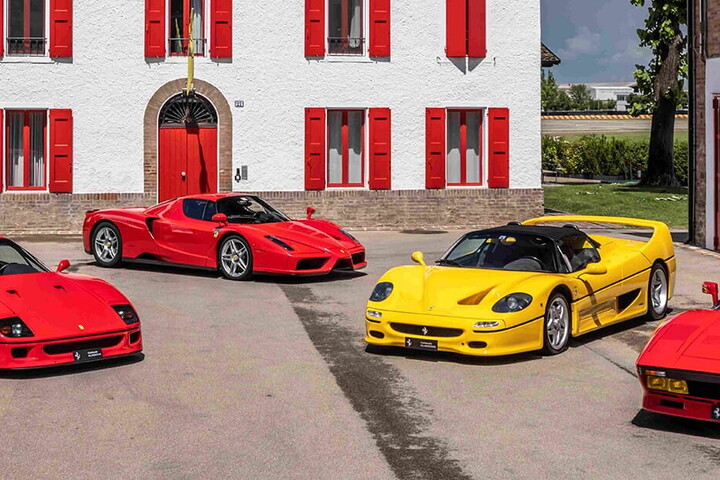In the beginning
Pagani's Zonda R was the first model to chase records, and now this illustrious lineage continues with the stunning new Huayra: the latest ‘R' car from the Italian manufacturer. For his latest creation, Horacio Pagani has dispensed with a turbo, putting the accent on normally-aspirated performance in a truly extreme car that knows no limits. So it's no surprise that its home can only be the race track.
This car, with just 30 examples produced, is a true open-air automotive laboratory, showcasing Pagani's future technology and representing a celebration of performance, technology and sheer art. All within a track-day car that boasts the highest possible safety standards.
There's something about the Pagani Huayra R that recalls the classic Le Mans sports cars of the 1960s and 70s, with flowing lines redolent of racing passion and spectacular performance. The new car is the spiritual successor to the Zonda R launched at the 2009 Geneva Motor Show, which at the time constituted a revolutionary glimpse of the future.
Counting the numbers
The Huayra R's vital statistics speak for themselves. A race-bred V12-R 6.0-litre normally-aspirated engine puts out 850 horsepower and 750Nm of torque, from the lightest, most powerful and most efficient powerplant of its type ever created.
That engine weighs in at just 198 kilograms, with the whole car tipping the scales at only 1050 kilograms. The monocoque chassis, which even incorporates the seats, is created using the most recent composite technologies from Pagani's workshops: namely Carbo-Titanium HP62-G2 and Carbo-Triax HP62. The new Huayra makes full use of cutting-edge construction and engineering techniques that come from the world of motorsport, to guarantee a strong car that's perfectly suited for use on a race track.

Extreme but secure
There are no compromises in the Pagani Huayra R, but the emphasis is still firmly on safety. The car has been carefully designed with painstaking research caried out into materials, chassis dynamics and roll bar structures, in order to guarantee its lucky drivers not only breath-taking performance, but also safety standards that comply with the FIA's most severe regulations for GT cars.
The integrated survival cell within the monocoque uses specialised materials to absorb impacts at the front, side and rear, made out of composites that soak up kinetic energy in the case of an impact or rollover.
The fire extinguisher system in the cockpit is activated automatically if there's a fire, while the seats (which form part of the monocoque) are equipped with six-point belts and upholstered in fire-repellent Nomex.

Feeling the power
Every single element of the Huayra R is geared towards performance: from engine to aerodynamics to suspension. All this power also needs to be harnessed, so Brembo brakes and Pirelli tyres come as standard. The Huayra R is capable of stopping as fast as it goes, thanks to its state-of-the-art CCM-R automatically-ventilated carbon ceramic brake disks, matched to racing pads. As for the tyres, they have the unenviable task of keeping the equivalent of 850 horses glued to the road.
This comes thanks to Pirelli's unparalleled experience in both international GT3 and single-seater competition, going back to the Italian firm's victory at the very first Formula 1 race ever held, at Silverstone in May 1950. But Pirelli's motorsport history began even earlier: the company has been involved in racing for more than 110 years, using its technology to unleash the performance of the world's most desirable sports cars.
A lengthy joint development programme in tandem with Pagani Automobili has resulted in a dedicated P Zero slick tyre that's capable of offering millimetre-perfect precision along with the feeling of complete control: even for non-professional drivers. All this adds up to exemplary performance in terms of handling and braking, as well as exceptional driveability through every corner.




